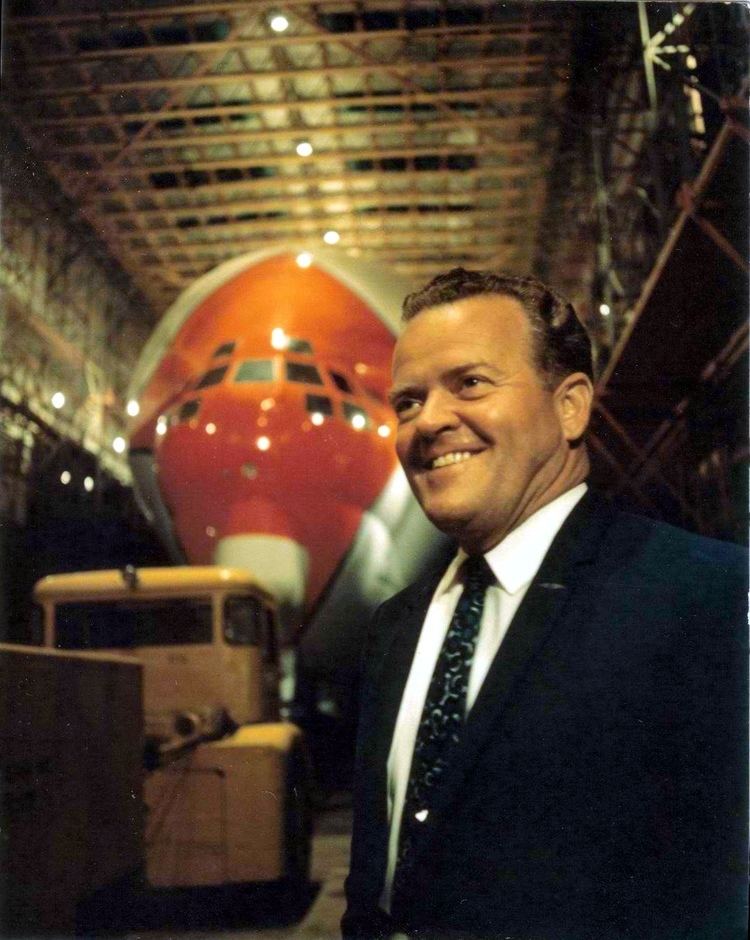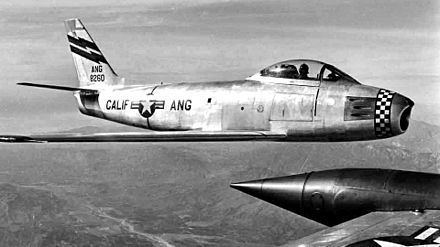Battles/wars World War IIPOW Rank Second lieutenant | Name John Conroy | |
 | ||
Resting place Pistol Creek Ranch, Idaho, U.S. Occupation BusinessmanAircraft designer Children Michael, Barbara, John Timothy, William, Angelee, Clifford Years of service 1942–1948 (USAAF) 1954-1957 and 1960-1961 (CANG) Awards Purple HeartAir Medal with two Oak Leaf ClustersDistinguished Flying Cross Died December 5, 1979, Northridge, Los Angeles, California, United States Spouse Gloria Conroy, Jeanne Conroy, Milbrey Conroy, Lynn Conroy Service/branch | ||
Allegiance United States of America | ||
John Michael "Jack" Conroy (December 14, 1920 – December 5, 1979) was an American actor, aviator, and later businessman, whose company Aero Spacelines developed the Pregnant Guppy, Super Guppy, and Mini Guppy cargo aircraft. He later founded Conroy Aircraft and Specialized Aircraft in Santa Barbara, California.
Contents
- Early years
- World War II
- Record flights
- The Pregnant Guppy Aero Spacelines
- Conroy Aircraft
- Specialized Aircraft
- Awards
- Film credits
- References

Early years

Conroy was born in Buffalo, New York, later attended high school in Sand Springs, Oklahoma, and studied engineering at St. Gregory's College (St. Gregory's University) in Shawnee, Oklahoma. He hitched a ride on a freight train from Oklahoma to Hollywood, California, where he landed bit parts in films during the years of 1937–1940 under the screen name of Michael Conroy, since John Conroy was already taken. Some of the films were with "The Little Tough Guys". He attended the College of Theatre Arts at the Pasadena Playhouse.
World War II
In 1940, against the advice of his agent who said "the big parts are coming", he hopped a freighter to Honolulu, Hawaii, where he learned to fly and made his first solo flight in 1940. He was working at Pearl Harbor as a civilian digging underground fuel tanks on Sunday, December 7, 1941. After witnessing the Japanese attack he immediately enlisted in the United States Army Air Forces.
In early 1942, just months after his 21st birthday, he was commissioned as a 2nd Lieutenant, and as the pilot of a B-17 was in command of a nine-man crew. After training in the U.S., he flew his B-17 across the North Atlantic and as part of the 379th Bombardment Group of the 8th Air Force, operating from Kimbolton, England, flew 19 missions over Germany. On his 19th mission, on November 30, 1944, his aircraft was shot down over German farmland. After his crew bailed out, he forced his way out of the nose door, dislocating and fracturing his shoulder and breaking his right arm in the process. He parachuted to earth, landing in a farmer's field somewhere near Zeitz, was captured, interrogated and interned as a prisoner of war at Stalag Luft I, Compound North 3, on the Baltic coast until the end of the war. Conroy remained on active duty with the USAAF until 1948, serving as a special air mission pilot and as an instructor in a Reserve Training Unit. Following an honorable discharge from the service, he spent 12 years as an airline pilot.
Record flights
After returning from the war, Conroy continued to fly with non-scheduled airlines and also joined the California Air National Guard, based at the Van Nuys Air Base. On May 21, 1955, Conroy, then a 1st Lieutenant attached to the 115th Fighter Interceptor Squadron, completed "Operation Boomerang". This involved flying from coast-to-coast and back in one day during daylight hours. He flew an F-86A Sabre from Van Nuys to Floyd Bennett Field, New York, and returned using fuel stops both ways, setting a record of 5058 miles in 11 hours, 26 minutes, 33 seconds (442.0 mph). A decade later in 1965, Conroy and co-pilot Clay Lacy achieved another record-breaking flight in a Learjet. Operation "Sunrise Sunset" completed a round-trip flight from Los Angeles to New York and back, the first time a business jet made a round-trip flight across the U.S. between sunrise and sunset on the same day.
The Pregnant Guppy – Aero Spacelines
The Pregnant Guppy had a humble beginning on the proverbial cocktail napkin. One evening Conroy, Lee Mansdorf and others were discussing the problems NASA were having transporting the rocket booster stages aboard ships through the Panama Canal and the Gulf of Mexico. Mansdorf had recently purchased several surplus Boeing 377 Stratocruisers but was not really sure what to do with them. Conroy believed that they could take one of the Stratocruisers, enlarge the fuselage big enough to hold a rocket booster and contract with NASA to fly the boosters from California to Cape Canaveral, Florida. Conroy and Mansdorf founded a company, Aero Spacelines, to pursue the project.
Conroy's drive to build the aircraft was so great, that when financing ran out, he did not: "Conditions reached the point where Conroy no longer owned his house, cars, or furnishings." By flying the Guppy on borrowed aviation gasoline to the Marshall Space Flight Center, Conroy was able to test fly the aircraft with Wernher von Braun. On the basis of the test flights, contract negotiations with NASA began in earnest. The "Pregnant Guppy" first flew on September 19, 1962, piloted by Jack Conroy and co-pilot Clay Lacy. When Van Nuys air traffic control realized that Conroy intended to take off, they alerted police and fire departments to be on alert. However the huge aircraft performed flawlessly, the only difference in handling being a slight decrease in speed caused by extra drag of the larger fuselage. Wernher von Braun stated that "The Guppy was the single most important piece of equipment to put a man on the Moon in the decade of the 1960s."
Conroy then developed the Super Guppy, which first flew on August 31, 1965, in Van Nuys. The Mini Guppy was built in Santa Barbara, California, and was christened "Spirit of Santa Barbara", on May 24, 1967. Two days later, the Mini Guppy was carrying cargo to the Paris Air Show, where in 1967, Conroy was awarded the "Medal of Paris" for the greatest contribution to aerospace for the prior two-year period for the Guppy aircraft.
Conroy was the founder and president of Aero Spacelines, a subsidiary of Unexcelled, Inc. until he resigned in August 1967.
Conroy Aircraft
In 1968 he started Conroy Aircraft at Santa Barbara Airport. He developed the Conroy Skymonster, a turboprop Canadair CL-44, designated the CL-44-O, the Conroy Turbo Albatross, Conroy Stolifter (turboprop Cessna 337 Skymaster), and the Conroy Turbo Three (turboprop DC-3). At this time he had acquired more that 20,000 hours flying time. A week after the first flight of the "Turbo-Three" (N4700C), he flew it to the 1969 Paris Air Show. The company was dissolved in 1972. The CL-44-O is currently at Bournemouth Airport, England.
Specialized Aircraft
In 1972 he started Specialized Aircraft, originally known as Turbo-Three Corporation, in Santa Barbara. In 1974 the company proposed the Conroy Virtus to NASA for use as a Space Shuttle carrier aircraft, however it was rejected in favor of the Shuttle Carrier Aircraft. In 1976 the company relocated to Camarillo Airport in Camarillo, California, and developed the Conroy Tri-Turbo-Three which was used on contract with Polair Research. He christened this aircraft "The Spirit of Hope" for the City of Hope Hospital in Duarte, California, where he had been receiving treatment. This Tri-Turbo Three, N23SA, was used in 1984 to transport eight business people, members of the Seven Summits organization, plus three crew members to the Antarctic.
